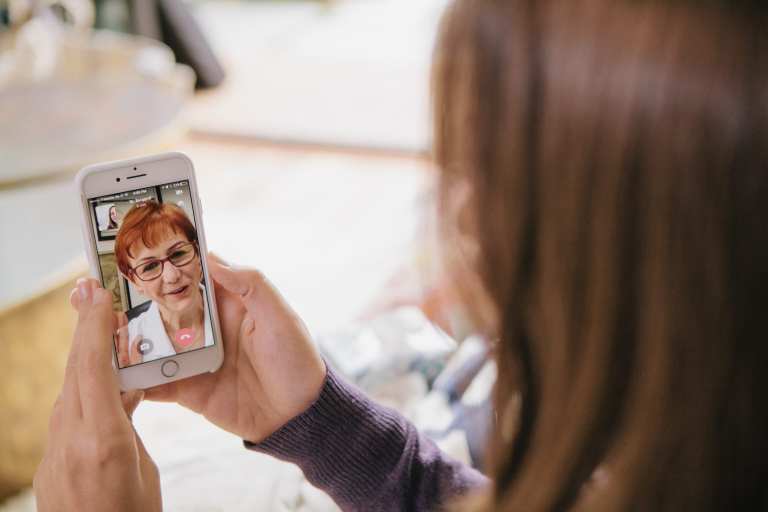Although house calls were the most common method by which doctors gave medical care just a few generations ago, as of the second decade of the 20th century, most people are long since habituated to the idea that a doctor is someone one goes out to see.
As of today, about 1 percent of all medical care is delivered within the home, as opposed to 100 years ago when it was roughly half.
But with the rise of virtual care, Doctor On Demand CEO Hill Ferguson told Karen Webster in a recent conversation, the “pendulum is starting to swing back” toward in-home care as a more expedient and accessible method of medical care that is as good or better than the doctor’s office visits that are now the norm.
A century’s worth of habituation is not an easy thing to overcome among consumers, he noted, but the tailwinds pushing virtual medicine have multiplied and intensified over the last several years in a way that has pushed the entire market toward a tipping point.
There is a shortage of primary care physicians, which has left patients in underserved areas driving for hours just to get to the nearest doctor’s office. And while the physical experience has gotten much worse over that last half decade for some, telemedicine has gotten better, buttressed by technological enhancement and improvements that have made it easier, faster and more efficient than ever to provide end-to-end medical care via multiple digital channels.
Health plans and employers have increasingly noticed this enhanced capability, Ferguson noted, and it has been promoted to their workers and members, raising both awareness and comfort with the product.
Advertisement: Scroll to Continue
And then, of course, there is the black swan — the novel coronavirus, COVID-19, untreatable, highly contagious and spreading rapidly worldwide. And while Hill was hesitant to sound as though he is “cheering for the virus,” he noted the reality is that the simple fact that it has turned both the Centers for Disease Control and Prevention (CDC) and the World Health Organization (WHO) into telemedicine brand evangelists has been undeniably good for business.
“It’s great when other organizations are spreading that message for us, which is what we have now when the World Health Organization, CDC and others are actually recommending telemedicine as a great method to seek care.”
That’s because he said he really believes telemedicine is a great way to seek care — in the event of a crisis or not.
[embedyt] https://www.youtube.com/watch?v=nHQ-Nbb5CdE[/embedyt]
An Unexpected Ignition Event
Even before the coronavirus appeared on the scene, Ferguson noted, Doctor On Demand had seen awareness of telemedicine skyrocket in recent years. It hasn’t quite made it to the point of majority saturation in the public mind, although a few more weeks of coronavirus might well change that, but if one even looks back a year or two, public awareness was in single-digit percentages.
But growing awareness is only half the battle with a novel delivery method of medical care, he noted, because the other half is getting consumers to actually take the plunge and try it. That isn’t always easy as people are rightly conservative about their health and very wary of trying new things.
Consumers who try telemedicine tend to like it; among the company’s consumer base, it sees 95 percent of consumers who use the service once come back to do it again. But that first usage is often a tough hurdle to get over.
An incurable, unpredictable, unusually contagious virus with a mortality rate that just doubled has the strong effect of lowering that barrier across the entire healthcare ecosystem. Consumers have reason to consider a healthcare provision method that will not bring them into contact with potentially infected patients. Healthcare providers have a similar incentive to keep infected patients both away from them, and out of circulation in society at large. And even employers, who historically stay away from offering direct health advice or guidance to workers, have a reason to advocate for pursuing telemedicine at this juncture.
“As of today, there is not an HR department in the country, or maybe the world, that isn’t actively workshopping ideas around, ‘How do I keep my workforce safe? How do I educate them about the tools available to them?’ It becomes a perfect use case to remind people of their benefit to use virtual care,” Ferguson told Webster.
Although an unexpected and extraordinarily pressing medical event might be what ignites people to reach out and experiment with virtual care, he noted, a starting point is quite different from a finish line. And there is a lot of work still to be done in expanding virtual care.
Taking on the Future of Care
Virtual care is growing up quickly, Ferguson noted, and it could be about to grow up a lot more quickly in the face of global scare. But the future of Doctor On Demand remains steadfast in its goal of finding more ways to fit telemedicine into consumers’ lives. That means making it accessible to all consumers, not just those with employee-provided plans. Among things that make the platform unique in the segment is that it is open both to the general public and to customers via insurance, depending on coverage.
The company also has sought to expand the boundaries of the patient segment it serves. Although it started in urgent or emergency care, it has since expanded into behavioral health — anxiety, depression and other psychological care issues — and virtual primary care.
“Virtual primary care really treats everything as a front door to the patient’s health,” Ferguson said. “That might mean preventative care, making sure they’re getting an annual virtual wellness checkup, making sure they’re getting their immunizations, making sure their lab work is up-to-date for their demographic needs. And beyond preventive care, there is also chronic condition management.”
Doctor On Demand is also considering working with the government, particularly Medicare and Medicaid, to develop more robust support for virtual medicine options, although Ferguson noted that will likely be slowing given the nature of change in public systems and the educational work the company must do to convince officials that allowing coverage of virtual care will lower their costs, not cause a sudden spike when people start making virtual appointments merely because they can.
In short, he noted, virtual care is starting to find its legs in the U.S. market, and it is on the verge of a bump from the unexpected situation emerging worldwide. But there’s still a lot of work to be done before the virtual house call becomes as common as the original analog version it was 100 years ago.




